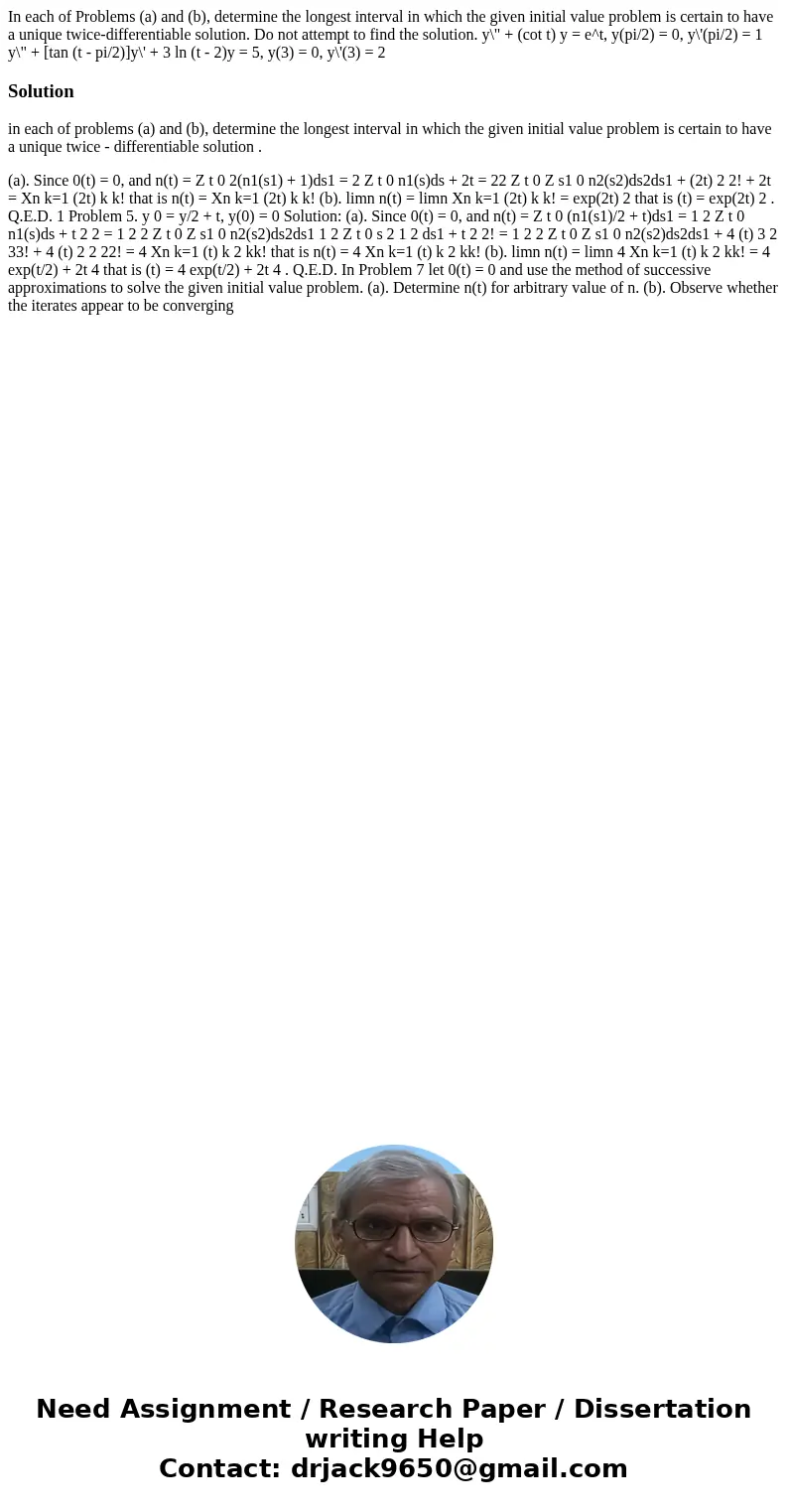In each of Problems a and b determine the longest interval i
Solution
in each of problems (a) and (b), determine the longest interval in which the given initial value problem is certain to have a unique twice - differentiable solution .
(a). Since 0(t) = 0, and n(t) = Z t 0 2(n1(s1) + 1)ds1 = 2 Z t 0 n1(s)ds + 2t = 22 Z t 0 Z s1 0 n2(s2)ds2ds1 + (2t) 2 2! + 2t = Xn k=1 (2t) k k! that is n(t) = Xn k=1 (2t) k k! (b). limn n(t) = limn Xn k=1 (2t) k k! = exp(2t) 2 that is (t) = exp(2t) 2 . Q.E.D. 1 Problem 5. y 0 = y/2 + t, y(0) = 0 Solution: (a). Since 0(t) = 0, and n(t) = Z t 0 (n1(s1)/2 + t)ds1 = 1 2 Z t 0 n1(s)ds + t 2 2 = 1 2 2 Z t 0 Z s1 0 n2(s2)ds2ds1 1 2 Z t 0 s 2 1 2 ds1 + t 2 2! = 1 2 2 Z t 0 Z s1 0 n2(s2)ds2ds1 + 4 (t) 3 2 33! + 4 (t) 2 2 22! = 4 Xn k=1 (t) k 2 kk! that is n(t) = 4 Xn k=1 (t) k 2 kk! (b). limn n(t) = limn 4 Xn k=1 (t) k 2 kk! = 4 exp(t/2) + 2t 4 that is (t) = 4 exp(t/2) + 2t 4 . Q.E.D. In Problem 7 let 0(t) = 0 and use the method of successive approximations to solve the given initial value problem. (a). Determine n(t) for arbitrary value of n. (b). Observe whether the iterates appear to be converging

 Homework Sourse
Homework Sourse